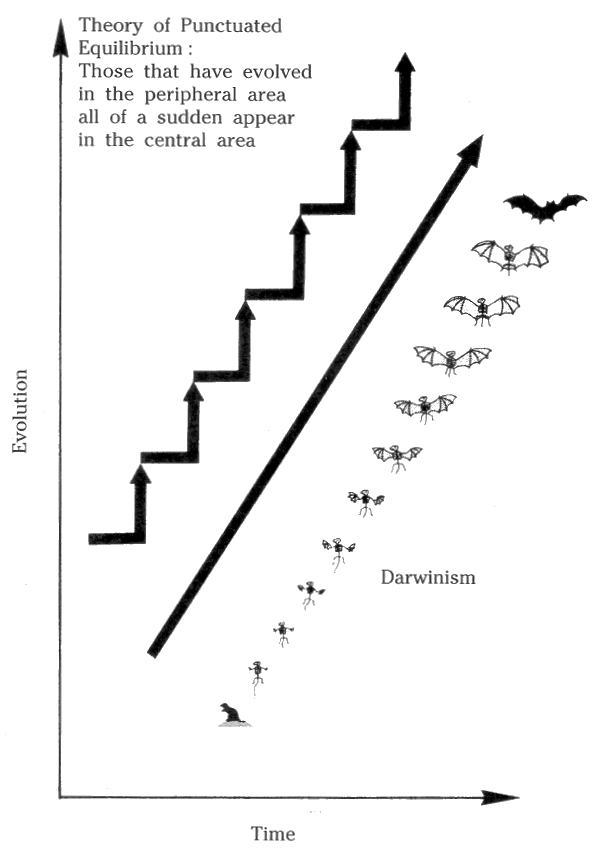Darwin's theory of evolution rests on gradualism, according to which an accumulation of minute variations leads to the formation of a new species. This means that living beings evolve smoothly and slowly.
But this gradualness of evolution is being questioned. In 1972, the American paleontologist Niles Eldredge and S. J. Could divulged the "theory of punctuated equilibrium." This theory asserts that a species usually passes a long period of equilibrium, during which the species remains unchanged; and then it undergoes a sudden change in such a way as to break the equilibrium. They reached that conclusion because they found the history of fossilized living beings to be quite incompatible with gradualism. Could suggests the following two features of fossilized living beings, which in effect deny gradualism:
i) Stasis: Most species exhibit no directional change during their tenure on earth. They appear in the fossil record looking much the same as when they disappear ; morphological change is usually limited and directionless.
ii) Sudden appearance: In any local area, a species does not arise gradually by the steady transformation of its ancestors; it appears all at once and "fully formed" (Gould 1980, 182).
What the theory of punctuated equilibrium explains is this:
Evolution occurs chiefly in a small group in an isolated, peripheral area because of topographical or climatic obstacles. Yet, the evolution of living beings in the peripheral area proceeds speedily ; therefore, seldom are living beings of an intermediate stage found in the form of fossils; generally speaking, only a group of individuals in the central area that is hard to evolve remains in the record of fossils. Therefore, the record of fossils tends to be static. And after a certain period of time has passed (in which evolution occurs), the descendants that have evolved move from the peripheral area to the central area and multiply. As a result, the fossils of a new species appear, all of a sudden.
The theory that, in order for a new species to be formed, a group with a new character has to be isolated was advocated by Moritz Friedrich Wagner (1813-1887). Mayr developed this theory and devised the mechanism of the species differentiation in an isolated group of the peripheral area. A group of individuals in the central area is stable and has great power to homogenize. Therefore, even if a new useful mutation may occur, that influence will be weakened-that is, the new character becomes weakened by crossing or hybridization. However, in a small, geographically isolated group at the peripheral area, natural selection works effectively, and thus there is a greater opportunity for the new character to be preserved. Therefore, the small group in the peripheral area tends to become different from the group in the central area.
A comparison between Darwinism and the theory of punctuated equilibrium is shown in Fig. 13.
As mentioned above, so many problems have been pointed out with regard to Neo-Darwinism. In spite of that, Darwinism is still alive. F. Hitching explains in his book
The Neck of the Giraffe that Darwinism is now at an impasse; nevertheless, he warns that "those who see in this turmoil the death throes of Darwinism may be underestimating the monster's capacity for survival" (Hitching 1982, 225).






